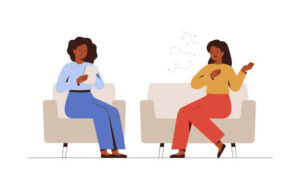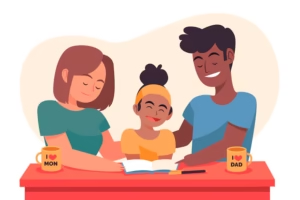Neurodiversity acknowledges the natural variations in how brains process information, learn, and interact. By shifting from “fixing” to “fostering” differences such as ADHD, autism, or dyslexia, parents empower their children to flourish. This comprehensive guide dives deep into the why, what, and how of supporting neurodiverse kids—equipping you with research, practical tools, and community resources.
Understanding Neurodiversity
At its core, neurodiversity is the idea that neurological differences—such as autism spectrum disorder (ASD), attention-deficit/hyperactivity disorder (ADHD), dyslexia, dyspraxia, and solid “neurotypical” brains—are part of the normal variation of the human population. Rather than viewing these as deficits to be cured, the neurodiversity paradigm celebrates them as differences with unique strengths and challenges.
- Origins of the Term: Coined in the late 1990s by sociologist Judy Singer, neurodiversity reframed autism from a pathology into a diversity movement championed by autistic self-advocates.
- Key Principle: There is no single “right” way for a brain to work. Instead, diversity in cognition and behavior mirrors the value we place on genetic, cultural, and physical diversity.
Why this matters for parents: embracing neurodiversity means helping your child build on intrinsic strengths—like pattern recognition in autism or hyperfocus in ADHD—while supporting them with tools to navigate areas of difficulty.
The Science & Benefits Behind Neurodiversity
Research continues to reveal how neurodivergent brains differ in structure, connectivity, and chemistry—and how these differences can translate into real-world advantages.
- Enhanced Pattern Recognition: Studies show autistic individuals often excel at detecting patterns and anomalies, benefiting fields like data analysis, coding, or quality control.
- Creative Problem-Solving: ADHD brains frequently exhibit divergent thinking—rapid generation of ideas and solutions—making them natural innovators in creative and entrepreneurial domains.
- Hyperfocus & Persistence: When passionate about a topic, neurodiverse children can immerse themselves for hours, mastering skills at accelerated rates.
💡 Practical Takeaway: Recognize that challenges (e.g., sensory overload, executive-function gaps) coexist with these strengths. Your role as a parent is to support both sides—leveraging the advantages while mitigating the hurdles.
Changing Mindsets: From Deficit to Difference
A key first step is an internal shift:
- Language Matters
- Person-First vs. Identity-First: Ask your child what they prefer (“child with autism” vs. “autistic child”). Respecting their choice fosters dignity.
- Reframe “Challenges”
- Replace “my child can’t” with “my child learns best when…”
- E.g., “My child struggles with noise” → “My child thrives in quieter environments.”
- Celebrate Uniqueness
- Regularly point out and praise your child’s special talents and interests. Acknowledge that their brain brings valuable perspectives to your family and community.
Building a Supportive Home Environment
Designing your living space and routines around your child’s needs will reduce stress and foster growth.
- Visual Schedules & Predictability
- Daily Charts: Use laminated charts or apps (e.g., Choiceworks) to map morning, after-school, and bedtime routines.
- Countdown Timers: For transitions, set a visual timer; e.g., “Five more minutes of screen time” reduces resistance.
- Sensory Considerations
- Quiet Zones: Dedicate a corner with soft lighting, cushioned seating, and noise-canceling headphones.
- Tactile Tools: Provide fidget spinners, stress balls, or textured fabric swatches to help regulate sensory input.
- Flexible Textiles: Let your child choose clothing from soft, tag-less options to minimize tactile discomfort.
- Flexible Expectations
- Time Management: Allow extra time for tasks like dressing or homework; use gentle reminders rather than pressure.
- Task Breakdown: Divide complex chores into smaller steps with checkboxes, celebrating each completion.
Educational Strategies & School Partnerships
- Understanding IEPs and 504 Plans
- IEP (Individualized Education Program): For children qualifying under IDEA—offers specialized instruction, accommodations, and goals.
- 504 Plan: Covers reasonable accommodations (e.g., extended test time, seating preferences) under the Rehabilitation Act.
- Classroom Supports
- Universal Design for Learning (UDL): Advocates for multiple modes of instruction—visual, auditory, kinesthetic—to reach all learners.
- Check-Ins: Request “brain breaks” or movement pauses during longer lessons to help with attention and resets.
- Peer Buddies: Pair your child with a supportive classmate for social modeling and emotional boosts.
- Home-School Communication
- Keep a shared journal or digital log (e.g., ClassDojo) to note successes, challenges, and upcoming events.
- Establish a weekly call or email check-in with teachers to align strategies.
Harnessing Strengths Through Interests
Interest-driven learning not only builds skills but also fuels motivation.
- Identify & Encourage Special Interests
- Interest Inventory: Regularly ask your child what they’re curious about—animals, trains, coding, art.
Themed Projects:
If they love space, build a solar system model together; if they love music, explore composing simple tunes.
- kill-Building Games & Activities
- STEM Kits: Brands like LEGO Mindstorms or littleBits teach engineering through play.
- Music & Rhythm: Drumming or piano can refine motor skills and pattern recognition.
- Strategy Games: Chess, checkers, or logic puzzles sharpen planning and foresight.
- Community Programs
- Adaptive Sports: Many communities offer sensory-friendly swim lessons, martial arts, or dance classes.
- Creative Arts Therapy: Drama, art, and music therapy groups facilitate expression and social skills.
Professional Supports and Therapies
A multi-disciplinary approach often yields the best outcomes.
- Occupational Therapy (OT): Addresses sensory processing and daily living skills (e.g., handwriting, self-care).
- Speech and Language Therapy (SLT): Supports communication, social pragmatics, and language comprehension.
- Behavioral Therapy:
- ABA (Applied Behavior Analysis): Focuses on positive reinforcement to build desired behaviors.
- DIR/Floortime: Emphasizes emotional and relational development through child-led play.
- Social Skills Groups: Small groups that role-play conversations, decode non-verbal cues, and practice turn-taking.
- Psychological Counseling: For co-occurring anxiety or mood challenges; teaches coping strategies.
Measuring Progress & Celebrating Wins
Tracking your child’s growth helps refine strategies and boosts morale.
- Behavior Logs: Note improvements in social interactions, reduced meltdowns, or new self-help skills.
- Goal Review: Revisit IEP or therapy goals every 3–6 months—adjust as achievements accumulate.
- Celebrate Milestones: Reward both small steps (e.g., a successful therapy session) and major achievements (e.g., making a new friend).
Joint Commission Accreditation, DHCS License,
& Clinical Partnership with CPCMG
Joint Commission Accreditation, DHCS License, & Clinical Partnership with CPCMG




In Clinical Partnership With
PRI Treatment Center is proud to clinically partner with Children’s Primary Care Medical Group San Diego to expand access to high-quality mental health services. Together, we’re bridging the gap between primary care and mental health to better support the well-being of children and families in our shared community.
FAQ
What does “neurodiversity” really mean?
Neurodiversity is the view that neurological differences—autism, ADHD, dyslexia, and more—are natural variations of the human mind, each with unique strengths and challenges.
How do I know if my child is neurodiverse?
Signs can include differences in communication, social interaction, attention, or sensory sensitivities. A qualified professional (psychologist, developmental pediatrician) can conduct formal assessments.
How can I make our home more sensory-friendly?
Identify your child’s triggers and create safe zones with calming tools: noise-canceling headphones, dimmable lights, soft seating, and fidget devices.
What if my child resists therapies or accommodations?
Involve them in planning: let them choose timer styles, select between two OT exercises, or help design their sensory corner. Autonomy fosters buy-in.
How do I foster peer relationships?
Facilitate structured playdates around shared interests, enroll in small-group classes (art, coding), and consider social skills groups that teach conversation cues in a supportive setting.
Quick Takeaways
- Reframe Differences as Strengths: Embrace neurodiversity by recognizing conditions like ADHD, autism, and dyslexia as natural variations with unique benefits.
- Design a Supportive Environment: Use visual schedules, sensory-friendly spaces, and flexible routines to reduce stress and promote independence.
- Collaborate with Schools: Leverage IEPs/504 Plans, UDL strategies, and regular teacher check-ins to ensure consistent support across home and classroom.
- Harness Special Interests & Therapies: Encourage passion-based projects, engage in skill-building games, and utilize OT, speech, and behavioral therapies to develop abilities.
- Advocate & Practice Family Self-Care: Stay informed on legal rights, connect with parent/sibling support groups, and maintain self-care routines to sustain resilience.

Dr. Warter received his doctorate in Clinical Psychology from The Wright Institute in Berkely, California, completed his Predoctoral Internship at USC’s Children’s Hospital Los Angeles, and was a Postdoctoral Researcher at USC’s Institute for Integrative Health and Wellness. Dr. Warter has also been trained at UCSF School of Medicine, Kaiser Permanente, and in community clinics in rural, underserved communities in Argentina and Paraguay. Dr. Warter has received training in providing parents with guidelines to help prevent behavior problems and enhance communication skills and strategies to promote children’s social, emotional, and academic competence. Dr. Warter has also published and presented at the University of Naples and the University of Buenos Aires on subjects related to Third Culture Kids and the impacts of Social Media on Personality and Self Esteem.








